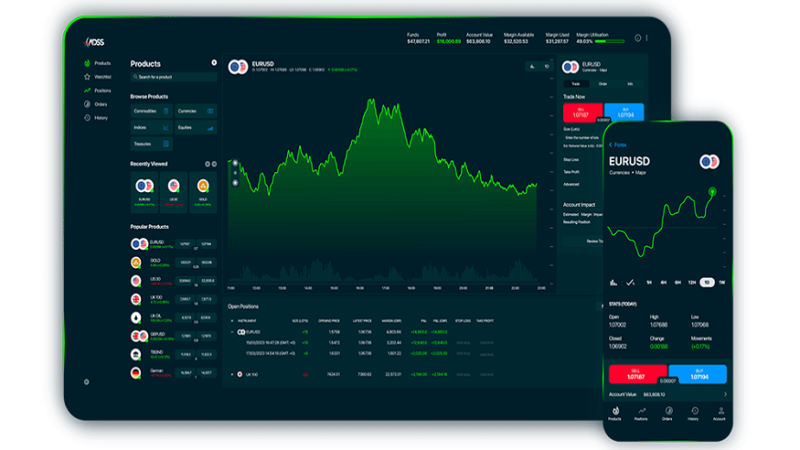The Dynamics of International Trade: Key Import and Export Data from Asia

Asia, the largest and most populous continent, holds a pivotal role in the dynamics of international trade. The region is not just a hub for manufacturing; it is an essential player in the global supply chain, exporting a diverse range of goods and importing essential resources to fuel its economies. This blog explores key import and export data from Asia, highlighting the top products and countries involved, as well as the implications of these trade dynamics on the global stage. Asia data provided by Import Globals contain all necessary information about product consignee, consignors details along with product details that are key information for market research.
Overview of Asia’s Trade Landscape
Asia is home to some of the world’s largest economies, including China, Japan, and India, each contributing significantly to both imports and exports. In recent years, Asia’s trade has evolved due to changes in consumer behavior, technological advancements, and geopolitical considerations, making it increasingly interconnected and competitive.
Global Import Export Data is essentially a treasure trove of insights into the international trade market, providing valuable information on the movement of goods across borders. By analyzing this data, businesses can make informed decisions to improve their supply chains, optimize their pricing strategies, and identify new market opportunities. It’s like having a powerful crystal ball that unveils trends and patterns in the global trade landscape, helping businesses stay ahead of the curve. So, dive into the world of Global Import Export Data and unlock a world of possibilities for your business!
Top Exports from Asia
Import Globals provides you the detailed outlook of all the export commodities by its Import Globals Asia Export Data including the industrial and agricultural goods for a proper visualisation to the importers worldwide to help them get the international domestic acquired necessities.
1. Electrical and Electronic Equipment
Key Products: This category includes a wide range of items, from smartphones and laptops to semiconductors and telecommunication devices.
Top Export Countries:
- China: As the world’s largest exporter, China supplies a significant portion of global electronics, benefiting from its robust manufacturing capabilities and supply chain infrastructure.
- Japan: Japan is known for its high-quality electronics and advanced technology, exporting products such as cameras, gaming consoles, and industrial machinery.
2. Machinery
Key Products: Machinery exports include industrial equipment, construction machinery, and automotive parts.
Top Export Countries:
- Germany: Although not in Asia, Germany remains a crucial partner, importing parts and machinery from Asian countries for assembly and distribution.
- South Korea: South Korea exports machinery, particularly in Data such as shipbuilding, automotive, and robotics.
3. Textiles and Apparel
Key Products: The textile and apparel sector is a major player, exporting garments, fabrics, and fashion accessories.
Top Export Countries:
- Bangladesh: Known for its low-cost and high-volume production, Bangladesh is one of the largest exporters of ready-made garments in the world.
- Vietnam: Vietnam has emerged as a key player in textiles, benefiting from trade agreements and investments in the garment manufacturing sector.
4. Vehicles and Automotive Parts
Key Products: This includes passenger cars, motorcycles, and automotive components.
Top Export Countries:
- Japan: Japan is renowned for its automobile industry, with companies like Toyota and Honda exporting vehicles globally.
- South Korea: South Korea’s automotive sector, led by Hyundai and Kia, is a significant contributor to the country’s export economy.
5. Pharmaceuticals
Key Products: Asia’s pharmaceutical exports comprise generic medicines, active pharmaceutical ingredients, and healthcare products.
Top Export Countries:
- India: Known as the “pharmacy of the world,” India exports a large volume of generic drugs to various regions, particularly Africa and the US.
- China: China is also a major player in pharmaceutical manufacturing, exporting active ingredients and finished products worldwide.
Top Imports in Asia
Asia Import Export Trade valuable trade statistics provide insights into the diverse and dynamic world of trade in Asia. From trends in import and exports to market analyses, this data can help businesses make informed decisions and navigate the intricate web of international trade. Whether you’re a seasoned trader or just dipping your toes into the global market, Asia Import Export Trade Data is your trusty companion for staying ahead of the game.
1. Crude Oil and Natural Gas
Key Products: Energy resources such as crude oil and liquefied natural gas (LNG) are critical for power generation and industrial activities.
Top Import Countries:
- China: As the largest importer of crude oil in the world, China relies heavily on energy imports to sustain its rapid industrial growth.
- Japan: Japan is heavily dependent on energy imports, especially LNG, as it has limited domestic energy resources.
2. Machinery and Mechanical Appliances
Key Products: This includes industrial machinery, electrical machinery, and other mechanical devices.
Top Import Countries:
- China: China imports advanced machinery and equipment to enhance its manufacturing capabilities.
- India: India imports numerous types of machinery to support its industrial and agricultural Data.
3. Raw Materials
Key Products: Essential raw materials, such as metals, minerals, and cotton, are vital for manufacturing and production.
Top Import Countries:
- China: With its extensive manufacturing industry, China imports a wide range of raw materials, including copper, iron ore, and other metals.
- India: India import raw materials like coal and iron ore to support its growing economy and industrial base.
4. Consumer Goods
Key Products: This includes electronics, clothing, and household items.
Top Import Countries:
- Japan: Japan imports a variety of consumer goods, especially electronics and luxury items.
- South Korea: South Korea sources many consumer products from other Asian countries, including appliances and fashion items.
5. Agricultural Products
Key Products: Asia imports various agricultural products, including grains, pulses, and processed foods.
Top Import Countries:
- China: As one of the largest consumers of agricultural commodities, China imports significant amounts of soybeans and other grains.
- India: India imports pulses and edible oils to meet domestic consumption needs, especially in times of short supply.
Implications of Trade Dynamics in Asia
1. Economic Growth and Development
Asia’s active participation in global trade has been a driving force behind its rapid economic growth. Increased trade has led to job creation, investment inflows, and improved living standards across the continent.
2.Supply Chain Integration
Asian countries are critical nodes in global supply chains, particularly in manufacturing and technology. The interdependence among Asian nations and with foreign markets supports innovation and efficiency, but it also raises vulnerabilities in times of global disruptions.
3. Sustainability Challenges
With heightened awareness of climate change and environmental degradation, Asian countries are increasingly focused on sustainable trade practices. This includes investing in renewable energy, sustainable agriculture, and responsible production methods.
4. Geopolitical Considerations
Trade relationships in Asia are influenced by geopolitical considerations, including trade agreements, tariffs, and regional stability. Countries are continuously adapting their trade strategies in response to shifting political landscapes, such as the ongoing trade tensions between the US and China.
Conclusion
The dynamics of international trade in Asia reflect a complex interplay of growing economies, diverse products, and strategic partnerships. As the region continues to expand its role on the global stage, understanding key import and export data is crucial for stakeholders, policymakers, and businesses alike. By leveraging its strengths in manufacturing, technology, and innovation, Asia is poised for continued growth and influence in the ever-evolving world of international trade. Import Globals provides you The outlook of the transportation facilities, affordable trade rates, trade agreements and all the other acquired necessary details of more than 150 countries required for the expansion of business worldwide.
Leveraging import export global trade data offers businesses a strategic advantage in navigating the complexities of international markets. By utilizing this rich database, companies can gain critical insights into market trends, competitor activities, and consumer preferences, enabling them to fine-tune their import and export strategies effectively. The authenticity of the data, sourced from key customs and shipping documentation, ensures that businesses can rely on its accuracy for decision-making. As globalization continues to reshape the business landscape, staying informed and adaptable through the use of comprehensive trade data will be essential for companies aiming to seize new opportunities and drive sustainable growth in the global marketplace.
This data is highly authenticated because it is collected from various countries custom shipping bill documents, such as shipping bill, bill of lading, bill of entries, custom invoices, government trade data etc. Ultimately, unlocking the potential of import export data can empower businesses to make smarter investments, mitigate risks, and enhance their competitiveness on the world stage.






